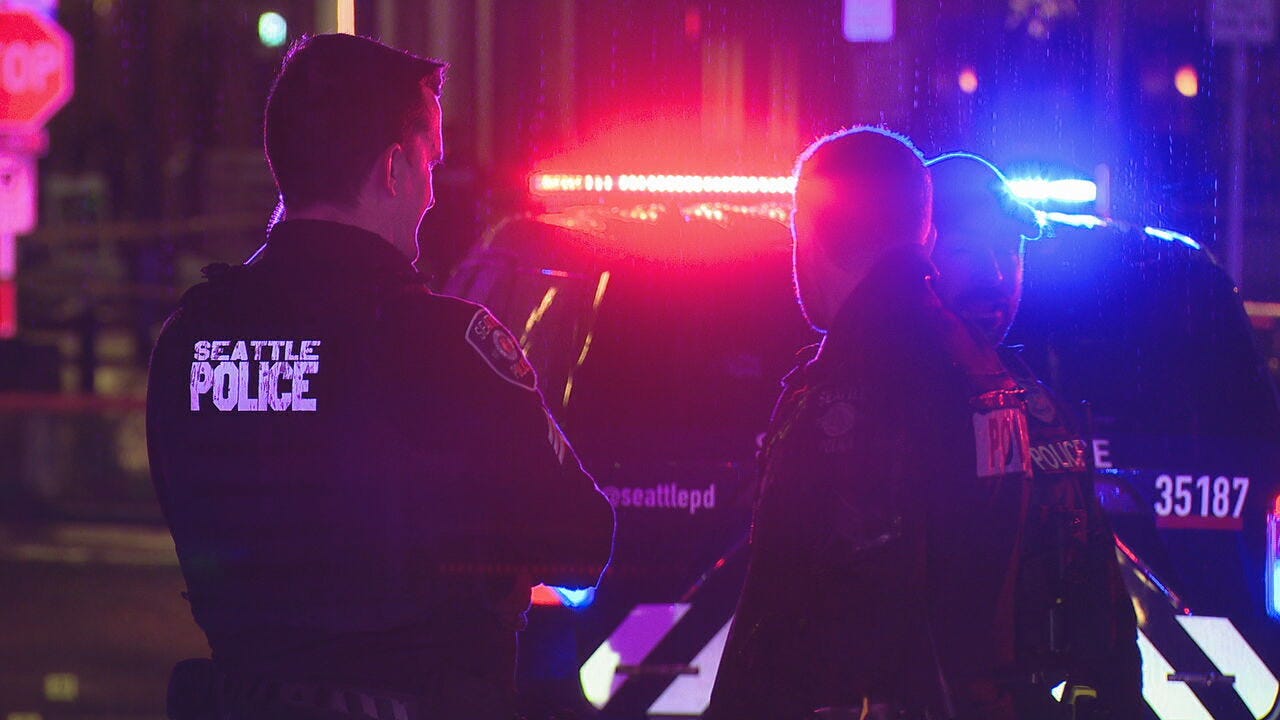Seattle's long murder-free streak is over, but violence is still trending downward
A triple homicide last weekend put a coda on 45 days of relative peace, but the city remains on track to realize its lowest violent crime rate in years.
BY JUSTIN WARD
Over the weekend, a man shot four people outside a nightclub in Pioneer Square, killing three. It was Seattle’s first murder in a month and a half. The 45-day streak was scarcely mentioned in the local media because good news is no news. Local crime reporters must have been bored, spending most of April and May writing up sad little drug busts and nonlethal stabbings. Now, they finally have an honest-to-goodness triple murder to talk about.
The Seattle police guild chimed in, too, barely concealing their schadenfreude behind a few insincere cliches. They called the shooting “tragic” and offered “thoughts and prayers” to the families of the victims before making a shameless dig on Seattle Times columnist Danny “Westnut.“
SPOG and Westneat have been sparring over a column he wrote about the guild’s “This is Seattle” social media campaign, the successor to SPOG’s even more tasteless “Feel Safer Yet” catchphrase, which Westneat also wrote up (and DivestSPD lampooned before that).
Like SPOG’s “Feel Safer Yet” campaign, this latest gimmick requires a steady flow of violent incidents to respond to, but those have been in short supply lately. As Westneat pointed out in a recent column (that SPOG linked to mockingly), crime was way down in 2024 and continues to fall in 2025.
Most folks consider that a good thing — unless they’re operating a protection racket that manufactures consent for raises by scaring the public with sensational crime stories. SPOG has been so bereft of good material that it has resorted to using “This is Seattle” to comment on incidents in other cities.
According to the Seattle crime dashboard, the violent and property crime rates in 2024 were both lower than in 2018, when SPD had 400 more officers. These trends are continuing in 2025. There’s been a 30 percent reduction in shootings and shots fired this year compared to the same period last year.
Comparisons of serious violent crime through May 18 show that violence is returning to pre-2020 levels, mirroring nationwide trends. Even with a triple homicide, Seattle stands at only 12 murders this year.
Adjusting for population, that’s around the same murder rate the city had in 2018-2019.
We see the same trend in aggravated assaults and robberies. In particular, armed robberies are way down. 2025 has had nearly a hundred fewer robberies so far this year than the comparable period in 2010, one of the safest years in decades.
This is all inconvenient for the police guild’s core narrative that there’s a straight line between high crime and low staffing. The suggestion seemed plausible on its face in 2022 and 2023, when the murder rate was up, and attrition was far outpacing hiring.
However, violent crime began falling significantly in 2024, when staffing was at its lowest point in decades, and it continues to drop while the fresh batch of recruits is still in training.
The decline can’t be credited to any of the public safety legislation the city council passed—the most notable being the SODA/SOAP zones—because those aren’t being utilized. Neither can it be attributed to the Real Time Crime Center, which still isn’t fully operational, nor the $60 million boost Mayor Harrell gave SPD in the 2025 budget.
The best explanation for the falling crime rate is that it’s a reversal of the COVID surge in violent crime seen across the country. All large cities are reverting to pre-COVID crime levels. It’s nearly universal.
Criminologists have known for years that crime levels rise and fall due to factors that are independent of police staffing and funding. Ironically, in attempting to rub Danny Westneat’s nose in the most recent triple homicide, Mike Solan actually demonstrates this perfectly.
The homicides occurred in one of Seattle’s best-staffed sectors. Officers on patrol were up the street and heard the shots. It isn’t just a guess or anecdotal observation that Pioneer Square is heavily patrolled.
SPD’s call data bears this out. The median priority one response time in Pioneer Square is 4.6 minutes, which is more than two and a half minutes below the city-wide median.
Moreover, Seattle had another long stretch without a murder at the beginning of the year. The city went nearly the whole month of January without a single homicide until someone was killed — also in Pioneer Square. This is Seattle, where you’re most likely to die in places the thin blue line is the thickest.






As a relatively new (8 year) resident of downtown Seattle, I am at a loss to understand what drives our negotiations with the Police union; I also do not understand the goals or outcomes expected for the Seattle U's perennial "meet your local precinct"program. Can you shed light on either of these questions.